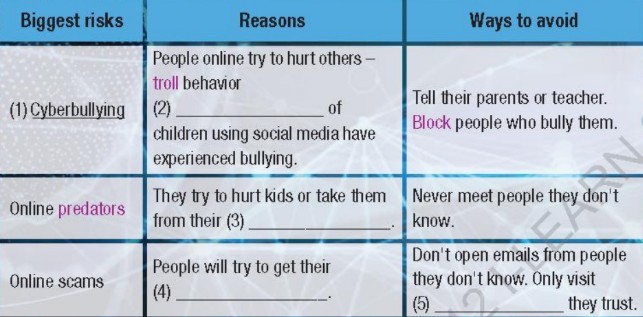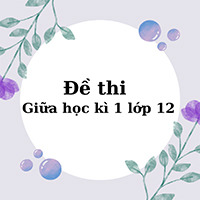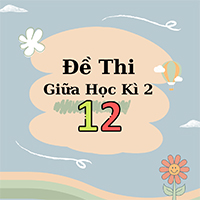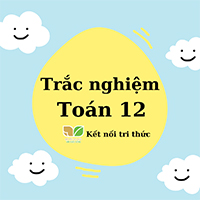Tiếng Anh 12 Unit 8 lesson 3 i-Learn Smart World
Tiếng Anh 12 Smart World Unit 8 lesson 3 trang 93
Giải SGK tiếng Anh 12 i-Learn Smart World unit 8 lesson 3 bao gồm đáp án chi tiết các phần bài tập xuất hiện trong SGK unit 8 Lesson 3 The media i-Learn Smart World giúp các em chuẩn bị bài tập tại nhà hiệu quả.
Let's Talk!
In pairs: Look at the pictures. What risks on the Internet do they show? Have you ever experienced any of these? Theo cặp: Quan sát các bức tranh. Chúng cho thấy những rủi ro gì trên Internet? Bạn đã bao giờ trải nghiệm bất kỳ trong số này?

Đáp án
Picture 1: Cyber attack
Picture 2: Addicted to social networks
Picture 3: Hurt by online comments
I have never experienced them.
Listening
a. Listen to a discussion about social media risks for teens. Who is talking? Nghe cuộc thảo luận về rủi ro truyền thông xã hội đối với thanh thiếu niên. Ai đang nói vậy?
1. a teacher
2. a parent
Đáp án
1. a teacher
b. Now, listen and fill in the blanks with no more than two words. Bây giờ, hãy nghe và điền vào chỗ trống không quá hai từ.

Đáp án
2. 60%
3. families
4. personal information
5. websites
c. In pairs: What are some other social media risks for teens? Theo cặp: Một số rủi ro truyền thông xã hội khác đối với thanh thiếu niên là gì?
Đáp án
A: What are some other social media risks for teens?
B: I think one big risk is addiction. Many teenagers spend too much time online and it affects their sleep and schoolwork.
A: That’s true. Also, some teens compare themselves to others and feel bad about their appearance or life. That’s called low self-esteem, right?
B: Yes, exactly. And don’t forget about privacy risks. Sometimes teens share too much personal information without realizing the danger.
A: Good point. There’s also the risk of fake news or misinformation. Teens might believe things that aren’t true.
B: Right! So social media can be fun, but it’s important to use it wisely.
Reading
a. Read David's essay and tick the best title. Đọc bài luận của David và đánh dấu vào tiêu đề hay nhất.
1. Dangers of social media
2. How to make social media safer
3. Why teens use social media
Đáp án
1. Dangers of social media
b. Match the bold words in the text with their definitions. Nối những từ in đậm trong văn bản với định nghĩa của chúng.
1._ __: a person that you do not know
2.___ : not part of the usual school courses/additional activities done at school
3. ___: put a message or picture on a website or social media
4.____: lasting for a long time or forever
5. _ __: a type of software that finds and destroys malware
Đáp án
1. stranger
2. extracurricular
3. post
4. permanent
5. antivirus
c. Now, read and choose the correct answers. Đọc và chọn đáp án đúng.
Đáp án
1. B
2. B
3. C
4. A
5. C
d. Listen and read. Nghe và đọc.
e. ln pairs: Do you agree or disagree with David about the three biggest dangers on social media? Why? Theo cặp: Bạn đồng ý hay không đồng ý với David về ba mối nguy hiểm lớn nhất trên mạng xã hội? Tại sao?
Đáp án
A: Do you agree with David about the three biggest dangers on social media?
B: Yes, I do. I think he made some very good points. For example, I agree that what you post online can affect your future. People don’t always realize that posts can stay forever.
A: I agree too. Some teens post silly or angry things, and later they regret it. It could hurt their chances of getting a job or going to a good school.
B: Exactly. I also think social media addiction is a big problem. Some teens spend hours scrolling and don’t focus on studying or spending time with real friends.
A: True. I’ve seen some friends ignore people in real life just to stay on their phone. It’s kind of sad.
B: And about malware and viruses—I think that’s also a serious danger. Many teens don’t even know what malware is.
A: Yeah, they just click on random links or download things without thinking.
B: So yes, I agree with David. Those three dangers—permanent posts, addiction, and malware—are real risks that teens should be more careful about.
Writing
a. Read about writing introductions for problem-solution essays, then read David's essay again and underline the general statement and the thesis statement. Đọc về cách viết phần giới thiệu cho các bài luận giải quyết vấn đề, sau đó đọc lại bài luận của David và gạch chân tuyên bố chung và tuyên bố luận điểm.
Đáp án
The general statement: Social media has become very popular.
The thesis statement: This essay will explain the biggest risks of social media and give some ideas on how to avoid them.
b. Write G for the general statement, P for problem, and T for the thesis statement, then put them in the correct order by writing a number (1-3). Viết G cho câu tổng quát, P cho vấn đề, và T cho câu luận điểm, sau đó sắp xếp chúng theo đúng thứ tự bằng cách viết một số (1-3).
Đáp án
a. T
b. P
c. G
Speaking
a. In pairs: Look at the list of risks on the internet. Rank the problems from 1 to 6 in the order of most to least risky and explain why, then discuss ways to avoid them. Theo cặp: Xem danh sách rủi ro trên internet. Xếp hạng các vấn đề từ 1 đến 6 theo thứ tự từ rủi ro cao nhất đến ít rủi ro nhất và giải thích lý do, sau đó thảo luận cách tránh chúng.

Đáp án
1. Cyber predators
2. Online scams
3. Malware and viruses
4. Cyberbullying
5. Internet/online game addiction
6. Posts being permanent
b. Decide on the two biggest dangers on the internet for teenagers. Complete the table below. Hãy quyết định hai mối nguy hiểm lớn nhất trên Internet đối với thanh thiếu niên. Hoàn thành bảng dưới đây.
Đáp án
| Biggest risks | Reasons | Ways to avoid |
| Cyber predators | direct threats to personal safety and well-being. | to be vigilant about who we interact with online and avoid sharing personal information with strangers. |
| Online scams | financial loss, identity theft, or even psychological harm. | to verify the credibility of websites and offers |
Useful language
a. Read David's essay again. In which paragraphs do you see the following phrases? Write the paragraph numbers (1-5) on the lines. Some phrases aren't used. Đọc lại bài luận của David. Bạn thấy những cụm từ sau ở đoạn văn nào? Viết số đoạn văn (1-5) trên các dòng. Một số cụm từ không được sử dụng.
A.... is a major problem.
B. One solution is ...
C. One of the biggest things/problems/risks ...
D. (Teens) should ...
E. I suggest that ...
F.... is another main risk for teens.
Đáp án
A – not be used
B - not be used
C - paragraph 2
D – paragraph 2
E - not be used
F - not be used
b. Match the useful phrases above to their purpose. Write the letters (A—F) on the lines. Nối các cụm từ hữu ích ở trên với mục đích của chúng. Viết các chữ cái (A—F) trên các dòng.
1. ____ :to introduce problems
2. : to introduce solutions
Đáp án
1. A, C, F
2. B, D, E
Let’s write
Now, write a problem-solution essay on the biggest risks on the internet for teenagers. Use the Writing Skill box, the reading model, and your speaking notes to help you. Write 180-200 words. Bây giờ, hãy viết một bài luận giải quyết vấn đề về những rủi ro lớn nhất trên Internet đối với thanh thiếu niên. Sử dụng hộp Kỹ năng Viết, mẫu bài đọc và ghi chú nói của bạn để giúp bạn. Viết 180-200 từ.
Gợi ý
In today’s digital age, the internet offers many benefits to teenagers, such as entertainment, education, and social connection. However, it also presents serious risks that can negatively affect their well-being. One of the biggest dangers is cyberbullying, where teenagers are harassed or threatened online. Another major risk is online predators, who may try to gain teenagers’ trust and then exploit or harm them. Additionally, exposure to harmful content, such as violence or inappropriate materials, can influence young minds in damaging ways.
To solve these problems, both parents and schools need to take action. First, parents should educate their children about online safety and set clear rules for internet use. Open communication helps teenagers feel comfortable reporting any suspicious or harmful behavior. Second, schools can offer digital safety lessons, teaching students how to recognize threats and protect their personal information. Finally, social media platforms and websites must improve monitoring systems to detect and block harmful content or users.
In conclusion, while the internet is a powerful tool for learning and connection, it also comes with risks for teenagers. Through education, open communication, and strong online protections, we can help keep them safe in the digital world.











